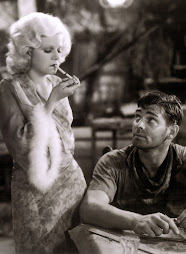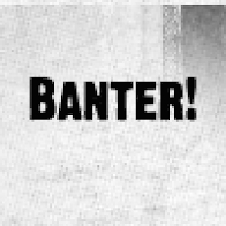 My idea for the Highly Personal Top New York Movie Moments was to pick certain scenes and/or sequences from various movies that were my favorite movie “moments” of New York (or “New York” as the case may be with some of the older ones). These movies aren’t necessarily my favorite New York movies (though a couple of them are); some of these movies aren’t even particularly good (though I think most of them are). But in each, there’s a particular scene, a particular shot, a certain moment that has infiltrated my imagination and added a piece to that mythic image of New York City that swims around my brain.
My idea for the Highly Personal Top New York Movie Moments was to pick certain scenes and/or sequences from various movies that were my favorite movie “moments” of New York (or “New York” as the case may be with some of the older ones). These movies aren’t necessarily my favorite New York movies (though a couple of them are); some of these movies aren’t even particularly good (though I think most of them are). But in each, there’s a particular scene, a particular shot, a certain moment that has infiltrated my imagination and added a piece to that mythic image of New York City that swims around my brain.So it’s kind of awkward then, that I start my list not with two movie “moments” as I described above, but with two actual, whole movies. The cinema we watch as children has a powerful effect, because it’s often these early films that form and shape not only how we approach the movies, but how we approach the world. The New York of my imagination was created in large part thanks to these formative movies of my youth. I watched Big when I was eight years old; Home Alone 2 when I was eleven. Together, they formed a version of New York City that was part playground, part slum. Playground if you had tons of money in your pocket; scary slum if you had none. Together they showed me that New York was the place where you went when you wanted to be on your own, to be independent and free. You went to New York to grow up; but with a lot of money, the city wasn’t a world of responsibilities and work (I had conveniently forgotten how Josh turns responsible and “grown up,” or how Kevin has to thwart the bumbling crooks again); it was a world of toy stores and junk food and pop machines in your living room and room service in the Plaza. New York in these two movies was only a scary place of hookers and bums when you had no cash.

 "It's pretty scary in here too, kid."
"It's pretty scary in here too, kid."With money in New York, even you could have your very own loft apartment filled with toys and a giant trampoline. With credit cards in New York, even you could stay at the Plaza and eat ice cream in bed while watching old black and white movies on tv.


Big is probably the single biggest reason why I’ve been in love with New York since as long as I can remember.
 I watched it when I was fairly young, and together with the creepiness of the Zoltar machine and the fact that the movie opens with Josh playing a computer game about wizards and dwarfs (I‘m a fantasy nerd), it was pretty much inevitable that I would be caught under the movie’s spell. But once Josh turned big and entered the city, he lived a life that was my dream come true. When you’re eight, the thought of playing with toys all day and getting paid for it, and living in that amazing loft, and being able to eat at fun Italian restaurants, and just basically doing whatever you want -- it’s the perfect life.
I watched it when I was fairly young, and together with the creepiness of the Zoltar machine and the fact that the movie opens with Josh playing a computer game about wizards and dwarfs (I‘m a fantasy nerd), it was pretty much inevitable that I would be caught under the movie’s spell. But once Josh turned big and entered the city, he lived a life that was my dream come true. When you’re eight, the thought of playing with toys all day and getting paid for it, and living in that amazing loft, and being able to eat at fun Italian restaurants, and just basically doing whatever you want -- it’s the perfect life. 

 Sure, in the end he goes back to Jersey and becomes a kid again; but for me, it was the playground world of New York that was the lasting image. My secret wish is still to go to New York, get a job with MacMillan toys, and spend all my time playing with toys and getting paid. And to have a loft apartment with a pop machine in it.
Sure, in the end he goes back to Jersey and becomes a kid again; but for me, it was the playground world of New York that was the lasting image. My secret wish is still to go to New York, get a job with MacMillan toys, and spend all my time playing with toys and getting paid. And to have a loft apartment with a pop machine in it.Home Alone 2 came along later, and so it didn’t create such a lasting, complete image of “fun New York" as Big had done, but it still contributed. The two biggest impressions left by Home Alone 2 were of Central Park and The Plaza Hotel.

In Big, the city was about fun, fun, fun; whereas in Home Alone 2, the city is about luxury, strangeness (but in a good way), living the high life (though Big had its share of the high life, with the limo ride and hanging out the sun roof):

 "Your limousine and ice cream, sir."
"Your limousine and ice cream, sir."Home Alone 2 also had the magic of Christmas. It confirmed my own long-held bias that Christmas should be celebrated in a cold climate, preferably with snow, and with big, wonderful Christmas trees everywhere. Along with Miracle on 34th Street, Scrooged, Elf, and countless other films, Home Alone 2 stands in the great tradition of movies that say: New York is the Christmas town. And since Christmas has always been my favorite holiday, this association between holiday and city has only increased my love for New York. When you’re forming an opinion about the world at age eleven, and you see Christmas and New York so inexorably intertwined, you can’t help but fall in love with the city.

Home Alone 2 also helped create in my mind the mystique of Central Park.
 I’ve always been fascinated with Central Park. There it is, this gigantic stretch of wilderness right smack dab in the middle of this huge city. The Central Park of Home Alone 2 was at once beautiful and strange; a bit of a fairy land amidst the steel and reality. Having recently been to New York for the first time (right after Christmas!), I can’t tell you how much I longed to see standing before me the surreal image of the pigeon lady. Alas, she is only a part of movie New York. But in those images swimming around my brain, imprinted there by these movies of my childhood, the pigeon lady of Central Park exists. Drifting along the edges of the real park, I catch a glimpse of her even as I stand in the cold, bright sun of a real December day.
I’ve always been fascinated with Central Park. There it is, this gigantic stretch of wilderness right smack dab in the middle of this huge city. The Central Park of Home Alone 2 was at once beautiful and strange; a bit of a fairy land amidst the steel and reality. Having recently been to New York for the first time (right after Christmas!), I can’t tell you how much I longed to see standing before me the surreal image of the pigeon lady. Alas, she is only a part of movie New York. But in those images swimming around my brain, imprinted there by these movies of my childhood, the pigeon lady of Central Park exists. Drifting along the edges of the real park, I catch a glimpse of her even as I stand in the cold, bright sun of a real December day.


















_01.jpg)






